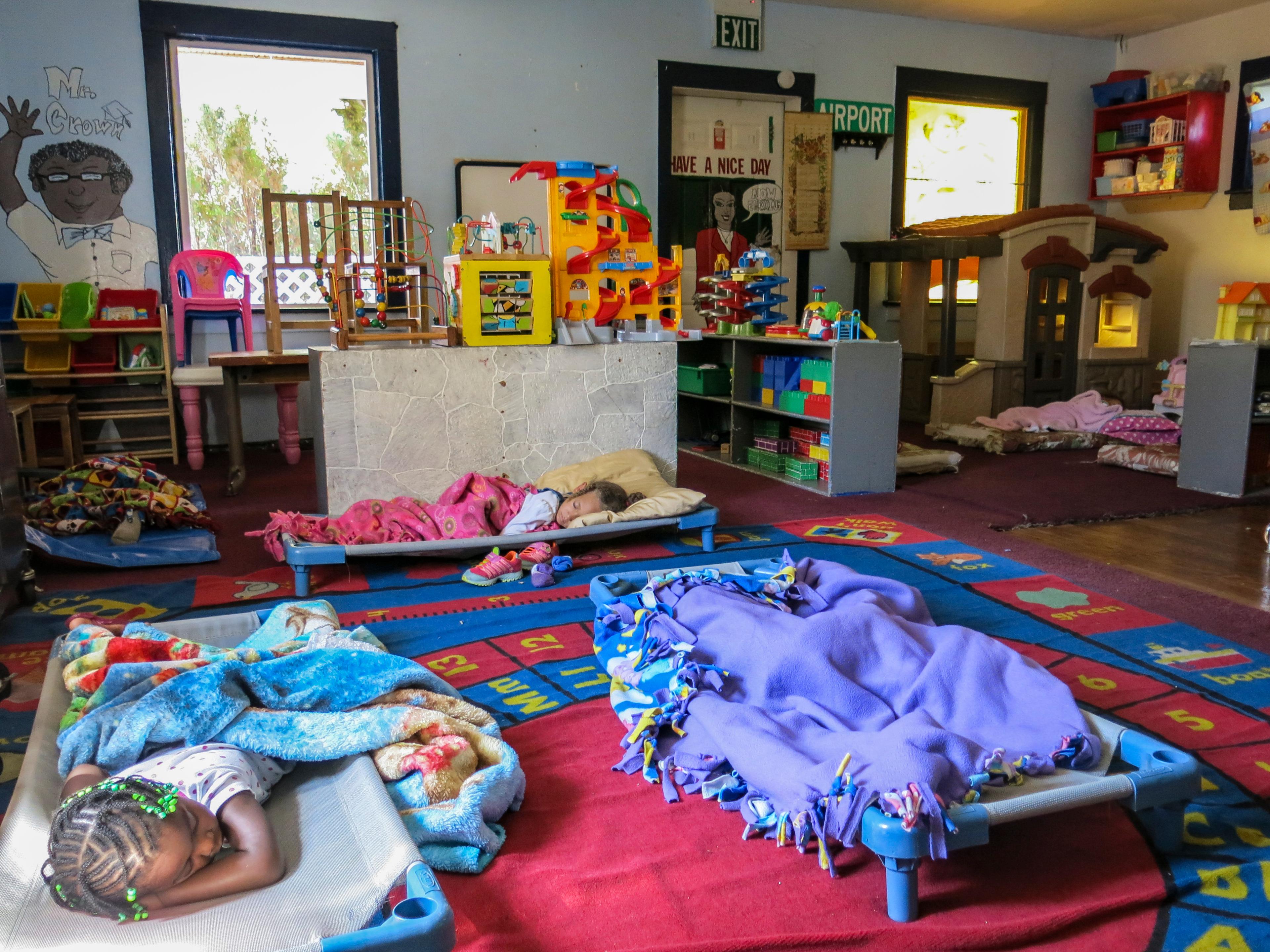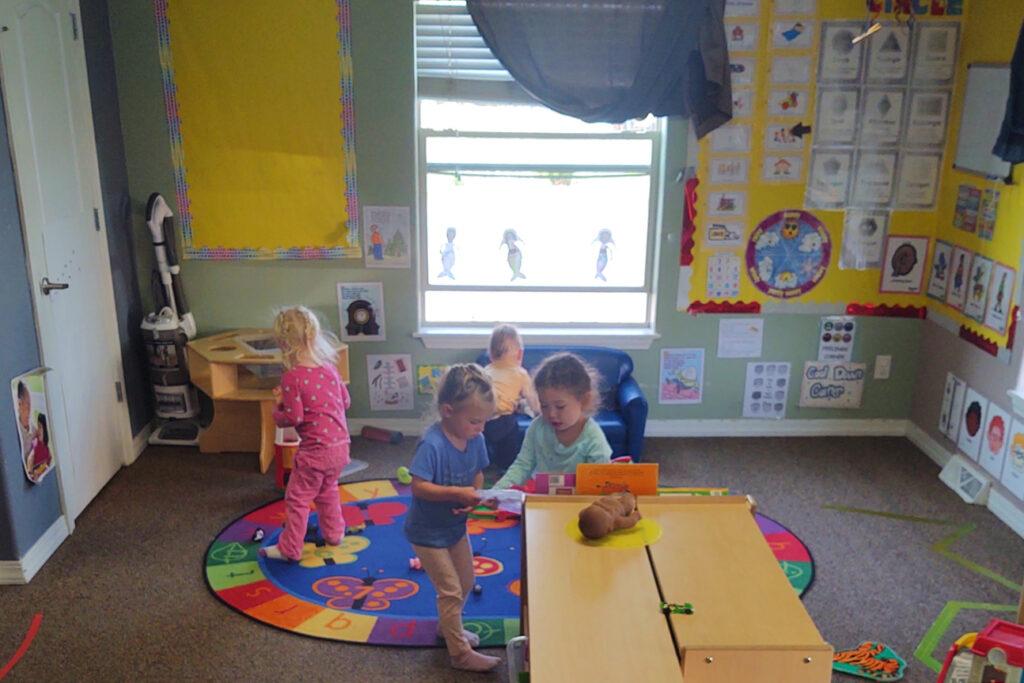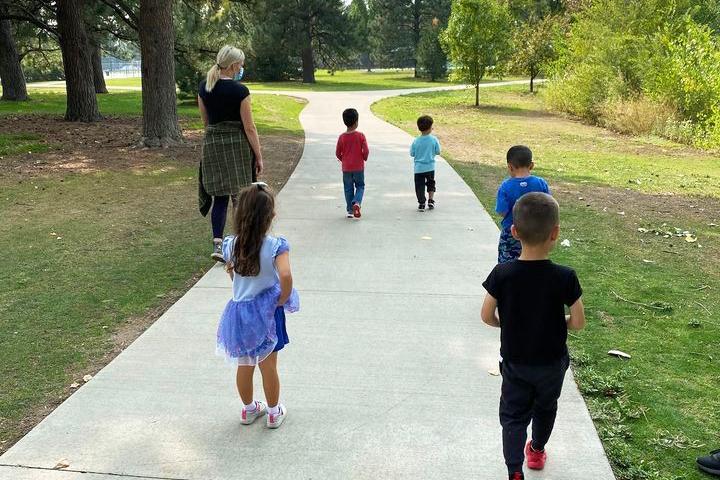
Jessica Driver’s Little Sprouts Learning Center was on a tight budget before the pandemic. Like other child care providers, her profit margins were slim.
But the pandemic posed challenges she couldn’t have prepared for, ones her business barely survived.
“It really threw us all in kind of an uproar,” she said, recalling the day in March she had to send all her staff home. “I didn't know how to handle a lot of these decisions like furloughing staff.”
It’s still touch-and-go as to whether Little Sprouts, the only licensed infant and toddler program in Granby, Colorado will survive the pandemic. But Driver is one of the lucky ones.
The first survey of Colorado’s child care landscape shows 10 percent of child care providers had closed, at least temporarily, during the pandemic. Enrollment over the summer for children aged under five dropped 39 percent, and 29 percent for school-aged kids, making the future uncertain for many other providers, who generate revenue mainly through enrollment and tuition.
The pandemic has made Colorado's shortage of both child care slots and child care workers even more dire. More than half of Coloradans live in a child care desert where there are more than three children for each available slot.
This summer, Early Milestones Colorado, a statewide early childhood nonprofit, collected responses from more than 1,200 providers –about a quarter of the state’s total. Concerns included health risks to children and staff, enrollment disruptions, and increased health and safety costs.
“We have many, many communities that really don't at all have enough providers to take care of the children who need care,” said Jennifer Stedron, the organization’s executive director. “There's not enough supply of providers and there's definitely not enough qualified workers.”
Providers have seen increased costs for cleaning, personal protective equipment, and sometimes staffing changes to allow for proper spacing. Not all providers have reopened and some can’t find enough staff to meet the demand. The survey found two-thirds of families had to alter child care arrangements due to the pandemic, with most parents going it alone or using informal care more than they’d prefer. Half of all families’ incomes fell, and families of color were more likely to see their incomes drop.
Social distancing with little kids is a big concern, with workers asking for help with strategies to keep toddlers apart from one another, computers for remote learning, and guidance on conducting online instruction for young children.

Centers that did reopen saw dramatic drops in enrollment initially.
Driver, the Granby child care operator, finally decided to reopen in June. Enrollment was down 34 percent. Some families had lost work, others were too nervous to come back, and some had family members watching children. She wondered whether her business would survive and applied for grants: “anything and everything.”
Sixty-five percent of her families qualify for some kind of subsidy, like the Colorado Child Care Assistance Program.
“Just knowing that there's a huge need in our community for child care,” she said. “We needed to keep our doors open while keeping our qualified teachers.”
Much to her shock and relief, Driver received one of the coveted federal paycheck protection program (PPP) loans, which allowed her to stay open, along with several other grants. Every one of her 11 staff members eventually returned.
“That drastically helped us continue to make those payroll expenses to be able to stay open while we did have low enrollment,” she said.
Students began enrolling in greater numbers by late summer.
A survey found nearly a quarter of the workforce was laid off or furloughed during the pandemic.
Ten percent of child care workers are not working or planning to return to work in the next three months, for a variety of reasons. A third cited health and safety concerns, some say their workplaces are still closed, some took a job outside the early childhood sector and some couldn’t find child care for their own children.
“Sometimes there was just a choice about needing to stay at home, to be with their own children,” said Stedron, who plans to go back into the field in November to update what is happening with the workforce.
Turnover has always been high in the child care industry and a third of the child care workforce receives public assistance because the pay is so low.
Stedron says she just had a call from a mountain town mayor and county commissioner who are fighting to keep their one licensed child care center open.
- In A Pandemic, Playground Time Plays A Big Role For The Students of Room 132
- With Enrollment Down In Some Colorado School Districts, Polis Asks For Community Support
- Family Explains Their Fears After A Toy Gun In Virtual Class Brought Police To Their Door
- Special Education Advocate Says Coronavirus And Online Learning Made ‘A Complex Issue Even More Complicated’
“The reason they can't keep it open is they just cannot find a qualified teacher that's willing to take the pay that they're able to pay,” she said. “So before the pandemic this was tough. Now it's getting even tougher.”
Little Sprout’s Driver was worried about burning out her staff, who must constantly clean toys and supplies, so she was able to hire a part-time worker in September to help with that task.
Driver typically loses one to three teachers a year, but so far, she’s kept all her employees.
Others in her mountain region haven’t been so lucky. Some providers lost staff who were older and afraid of the health risks, and others lost staff who couldn’t afford to live there. Child care professionals typically get paid between $12 and $14 an hour and they’re hard to hang onto in a resort town, says Driver. Her center is unusual in that it also offers benefits including paid time off, health and retirement benefits.

The pandemic is highlighting the child care crisis that already existed in Colorado.
In 2019, more than 39,000 children under four years old did not have the child care their families needed, according to research from the Colorado Health Institute.
Advocates attribute that to underfunding of early care and learning programs and slim profit margins that make it difficult for Colorado to maintain or increase the child care supply. High-quality child care is very expensive to offer but families can rarely afford to pay more.
“It’s just not a pure market-driven industry like others — although there’s lots of demand, that doesn’t mean you can charge higher prices to cover the costs,” Stedron said.
At the same time, child care advocates, and economists, argue that Coloradans can’t get back to work unless there’s affordable child care. So Stedron says the state is at a decision point.
“One thing we have to think about is, is this a public good? And if it's a public good, do we need to support it in a different way in this state?”
Congress allocated an additional $42 million to Colorado in the CARES Act with the flexibility to meet emergency needs. Stedron says the funds are being used for financial support, protective equipment, and cleaning supplies. But they are not enough. The Democrat-backed federal relief proposal has $57 billion for the child care industry, but it has stalled out in Congress.
Some local tweaks could help, too. During the pandemic, some counties temporarily altered their policies on the Colorado Child Care Assistance Program, which gives parents subsidies for child care.
Typically, the program pays the parent fee and the reimbursement to the provider only when the child shows up. Some changed the policy to reflect enrollment, rather than attendance, as many children stayed home especially in the early months of the pandemic.
Stedron says making that change permanent would help stabilize programs.









